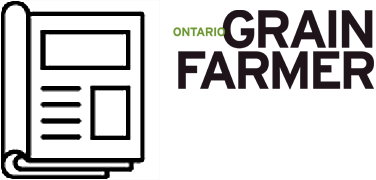An on-farm assessment of seedbed properties, seeding performance, and crop establishment in high-residue cropping systems
Principal Investigator: Joshua Nasielski
Research Institution: University of Guelph
Objectives:
- Conduct on-farm trials to identify the causes of poor crop establishment (corn and soybean) and non-uniformity (corn) across diverse high-residue cropping systems (tillage strategies, cover cropping strategies).
- Conduct on-farm trials to determine the spatial variability of seedbed properties, seedling-soil microbe interactions, crop establishment and corn emergence uniformity.
- Develop a straightforward protocol and picture key to diagnose underlying causes of poor crop establishment, enabling farmers to select appropriate management tools.
Impacts:
- Overcoming a barrier to adoption of cover cropping and reduced-till: Cover cropping and reduced/no-till offers well-known benefits, but their adoption is partially constrained by well-documented crop establishment issues. While ~25% of Ontario farmers grow cover crops, a large survey of Ontario farmers found that the 3rd most-cited agronomic challenge with cover crops was “too much cover crop residue” (15% of respondents). Similarly, a substantial proportion of Ontario farmers do no primary fall tillage prior to corn (40%) or soybean (75%) planting (depending on previous crop). But this percentage has decreased over time because of crop establishment issues, particularly as earlier planting into colder soils increases establishment risks (e.g., crusting, disease, non-uniform emergence). Our project will help farmers resolve establishment issues and facilitate adoption cover crops and reduced till.
- Improving corn emergence evenness: Establishment issues are rarely seen on tile-drained fields with intensive tillage. But even in these situations, uneven corn emergence can reduce yield. An on-farm study in Michigan found that per-plant corn yield was reduced by 8.5% per day of emergence delay, echoing results from an Ontario study. If our project leads to knowledge which makes even a small improvement in emergence evenness, large benefits can be generated. For example, if 10% of plants/acre are delayed by 2-days, reducing this by 1-day would improve yields by 1.5 bu/acre (assuming 32k plants/ac and average yield of 170 bu/ac).
- Improving seeding rate prescriptions: Management zones (MZs) are increasingly used for variable rate population prescriptions. Typically, lower plant populations are prescribed for marginal field areas (corn) or highly productive areas (soybean). However, if seed survival rates vary across MZs, this variability should be incorporated into variable seeding rate prescriptions. It is likely that field properties which influence optimal plant populations will also influence seed survival in high-residue scenarios. To increase the effectiveness of variable seeding rate prescriptions, we will evaluate how yield, seedling survival and plant stands are related spatially (e.g., do high-yielding areas have higher seed mortality than low-yielding areas?).
- Assisting with capital investments (tillage/planter accessories): When making capital investment decisions (e.g., planter attachments/tillage) it is important to know the underlying causes of poor establishment, so you are investing in the right tool to address the issue. Our project will generate protocols for others to use to determine underlying causes of crop establishment to help with equipment selection.
Scientific Summary:
Ontario corn and soybean farmers in no-till or minimal-till systems with high levels of crop residue can struggle with crop establishment, referring to the process of germination, emergence and final stand attainment. If crop establishment is poor or non-uniform, yield potential is irrevocably reduced. At the simplest level, germination, emergence, and final plant stand are a function of seedbed physical properties, soil thermal and moisture regimes and in some cases, soil biology. All of these vary spatially across a field (e.g., in response to residue level, topography). These spatially variable soil properties influence crop establishment directly but also planter performance and seedbed quality. The underlying causes of poor crop establishment, or of non-uniform emergence, have not been quantified on-farm in Ontario. While residue management tools are available to improve crop establishment, they must address the underlying cause of establishment problems to be effective.
To understand the causes of spatial variation in crop establishment and seedbed quality we propose to conduct on-farm trials across Ontario from 2024 to 2026 targeting reduced-till/no-till soybean (after corn) and corn (after corn or cover crop) systems. We will employ a standardized zone identification methodology to divide fields into areas likely to exhibit variability in seedbed quality and emergence. We will make comprehensive measurements of soil and crop attributes to identify the underlying causes of stand establishment issues and emergence non-uniformity. Establishment issues will vary across zones, fields, and years. The data collection methods, standardized zone identification and planned statistical techniques are designed to isolate variables that are broadly applicable to diverse farm conditions, soil types, and weather scenarios. This approach allows us to generalize our findings, providing actionable insights and simple field protocols that are relevant and transferable to a wider range of Ontario farms facing similar establishment issues.
External Funding Partners:
The project was funded in part by the Ontario Agri-Food Innovation Alliance, a collaboration between the Government of Ontario and the University of Guelph.

